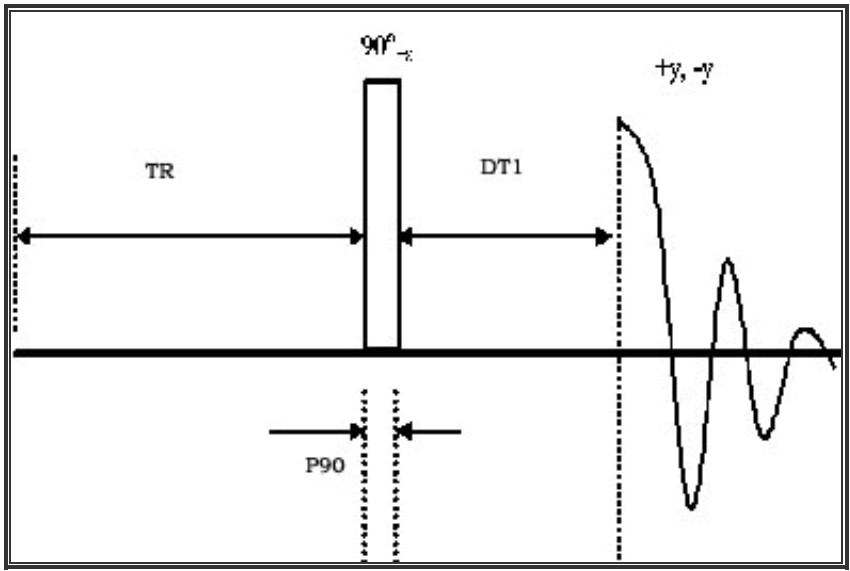Experimentos FID de RMN en el dominio del tiempo(Parte I)
Introducción
El experimento de RMN más simple se llama FID (Decaimiento por inducción libre) experimento. Un solo pulso de RF (normalmente un 90 pulso de grado) se aplica a la muestra y la respuesta se mide en función del tiempo después de la excitación de RF. Por su simplicidad, La aplicación FID a menudo se usa para configurar el instrumento de RMN. En el capítulo anterior explicamos cómo configurar los parámetros del sistema. Y de esta sección en, Continuaremos explicando cómo configurar los parámetros de secuencia en la aplicación particular.
Los parámetros de secuencia de pulso FID
TD
TD es el número de puntos de datos adquiridos después del pulso. Y es mejor que establezcas este parámetro como un poder de dos. Por ejemplo, TD = 256, 512, o 1024. Para una muestra de aceite, Normalmente establecemos TD a 1024 que siempre es suficiente para que la señal decaiga por completo.
SUDOESTE
SW es el ancho del espectro al muestrear. La frecuencia central es la frecuencia resonante que es la suma de SF y O1. Y SW es la escala de frecuencia alrededor de la frecuencia central. Por ejemplo, Establecimos SF+O1 = A, SW = B, Entonces la escala es de un-0.5*B a A+0.5*B. Por lo tanto, la bobina de recepción de la escala de frecuencia es de un-0.5*B a A+0.5*B.
También, SW es la frecuencia de muestreo que decide el intervalo de puntos de datos. En la mayoría de los experimentos, Será mejor que se pongas al menos SW para 100 Khz. Si SW es más pequeño que 100 Khz, tal vez pierda información de la muestra. Para una muestra de aceite, Normalmente establecemos SW para 100 Khz que es suficiente para muestras de aceite.
 mohoso
mohoso
